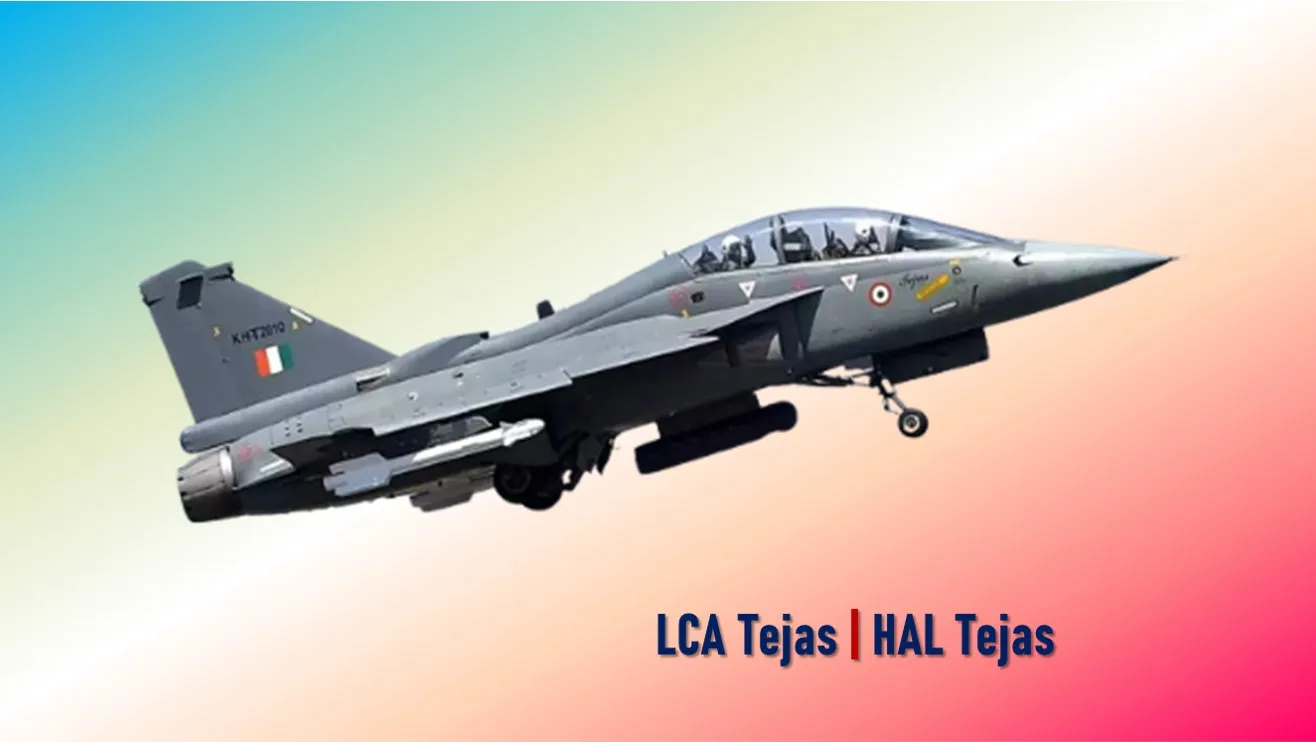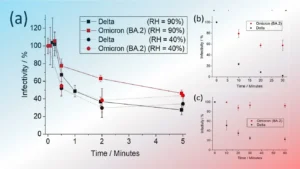Overview of HAL Tejas
HAL Tejas, also known as Light Combat Aircraft Tejas (LCA Tejas), is an Indian single-engine, delta wing, multirole light fighter.
Designed by the Aeronautical Development Agency (ADA) in collaboration with the Aircraft Research and Design Centre (ARDC) of Hindustan Aeronautics Limited (HAL).
Developed for the Indian Air Force (IAF) and Indian Navy.
Origin and Development of LCA Tejas
The LCA programme began in the 1980s.
Aims:
- Replacement for India’s ageing MiG-21 fighters.
- Boost domestic aviation capability.
- Achieve aerospace self-reliance.
- Build a local industry for state-of-the-art products with commercial spinoffs.
Organisational Structure
- Aeronautical Development Agency (ADA) was established in 1984 by the Government of India.
- Principal partner: Hindustan Aeronautics Limited (HAL).
- Collaboration with DRDO & CSIR Laboratories, public and private sector industries, and academic institutions.
Technical Features
- Aerodynamically unstable tailless compound delta-wing configuration optimised primarily for manoeuvrability and agility.
- Maximum speed: Mach 1.8.
- Range: 3,200 km.
- Combat range: 500 km.
- Ferry range: 1,850 km.
- Constructed of aluminium-lithium alloys, carbon-fibre composites, and titanium alloys.
- Composite materials make up 45% of the airframe by weight and 95% by surface area.
Avionics and Systems
- Night Vision Goggles (NVG)-compatible “glass cockpit”.
- Domestically-developed head-up display (HUD) by Central Scientific Instruments Organization (CSIO).
- Multi-function displays, Smart Standby Display Units (SSDU), and a “getyou- home” panel.
Variants and Orders
- Mark 1, Mark 1A, and a trainer version.
- IAF has ordered 32 Mark 1s, 73 Mark 1As, and 18 Mark 1 trainers.
- Planned procurement: 324 aircraft in all variants including Tejas Mark 2 under development.
- 43 improvements in the Mark-1A jets including AESA radar, long-range beyond visual range missiles, air-to-air refuelling, and advanced electronic warfare.
Deployment
First Tejas squadron became operational in 2016. (IAF fighter squadrons typically have 18 operationally deployed aircraft, with three crafts kept as a reserve.)
Participated in military exercises like Gagan Shakti 2018 and Vayu Shakti 2019.
83 single-engine Tejas Mark-1A aircrafts by the Indian Air Force were finalised in January 2020.
Argentina and Egypt have shown interest in Tejas, the Light Combat Aircraft (LCA) manufactured by Hindustan Aeronautics Limited (HAL).
Comparative Advantages and Significance
- Lightest in its category at nine tons.
- Cost-effective at Rs.180 crore apiece.
- Comparable to French Mirage 2000, U.S. F-16, and Swedish Gripen.
- No accidents during trials.
- Contributes to indigenisation of military hardware and provides valuable experience for future aircraft development.
Challenges and Future Prospects
- Long development period costing Rs.172.69 billion.
- Limited payload and agility due to the current GE F404 engine.
- Tejas Mark II with GE 414 engine is awaited but may require re-engineering.
Also Read:
Iron Dome System and how does it works?












1 thought on “LCA Tejas – aim, origin, Technical Features, Advantages and Challenges”
Comments are closed.